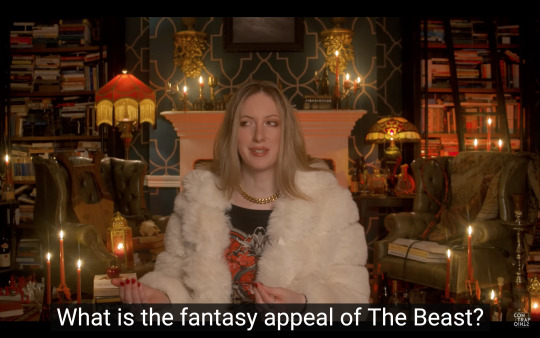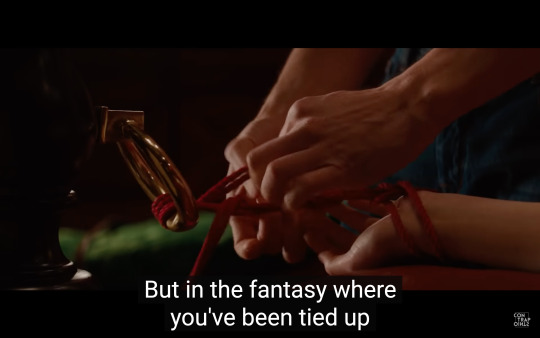#source: stephenie meyer
Explore tagged Tumblr posts
Text

#paper mario#papermariosuggestion#paper mario ttyd (switch)#paper mario ttyd#ttyd#source: this is the skin of a killer‚ bella#source: r0sexcl0uds#source: twitter#source: twilight#source: stephenie meyer
99 notes
·
View notes
Text
Mel: I have an idea.
Wanda: No murder.
Mel: I no longer have an idea.
#source: i dont remember#the host#the host 2013#the host (2013)#smeyers the host#smeyer's the host#stephenie meyer's the host#stephenie meyer#melanie stryder#wanda the host#wanderer the host#wanda host#wanderer host#wanderer/wanda#wanderer
70 notes
·
View notes
Text
i always think i have a very normal level of twilight knowledge until i encounter people who run TWILIGHT FAN ACCOUNTS who don't seem to know what i consider to be very basic twilight lore. i mean i know not everyone has read eclipse more than 15 times, but i mean—
#current debate is “to what extent can stephenie meyer's vampires survive dismemberment”#and im like okay well they very clearly answer this multiple times across multiple books. they can be torn apart and still reassemble#it took me approximately 2 attempts to find the relevant chapter in the book to confirm with direct quotes from the source material#GOD i wish i'd never donated my original copy of eclipse#i used to keep a tally inside the book of how many times i'd read it#i know it was more than 15 but exactly how many times i will never know#i only did this for eclipse btw. i was the most abnormal about that book specifically
3 notes
·
View notes
Text

[IMAGE DESCRIPTION]
Twilight version of the Domino Effect meme with 10 black dominoes from 2009's "World record for the largest domino toppled in a chain". On the lower right is a hunched over male about to tip over the smallest domino (1st domino). On the upper left is the largest domino (10th domino), which is 8.8 times taller than the smallest. Starting from the male and ending with the largest domino are individual sentences indicating specific moments in what is essentially Twilight history.
Male: “a group of “friends” get together at a villa (1816)” 1st domino: “Lord Byron proposes the “Ghost Story Challenge” (1816)” 2nd domino: “Polidori steals Byron’s idea (1819)” 3rd domino: “Stephanie Meyer wakes up “from a very vivid dream” (2003)” 4th domino: “Twilight gets published (2005)” 5th domino: “E.L. James writes a dangerously inaccurate BDSM fanfic (2009)” 6th domino: “Master of the Universe is published as Fifty Shades of Grey (2011)” 7th domino: “Dakota Johnson becomes famous (2015)” 8th domino: “Dakota calls Ellen DeGeneres out on her own show (2019)” 9th domino: “Ellen’s treatment of guests and employees finally gets noticed” 10th domino: “Ellen ends The Ellen DeGeneres Show after 19 years (2022)” 10th domino image: On the 10th domino stands an image with 6.9% opacity of Kelly Clarkson from The Kelly Clarkson Show.
[END OF IMAGE DESCRIPTION]
#domino effect meme#meme#domino effect#image description#GIMP#stephenie meyer#Twilight saga#Ellen#ellen degeneres#master of the universe#fifty shades of grey#e.l. james#dakota johnson#cancelled#The Kelly Clarkson Show#Kelly Clarkson#got inspired by random ass Twilight talk and here we are#failed to find credible source on the 1st and 3rd lines btw#but oh well
6 notes
·
View notes
Text



















"I wish that people who are inclined to crusade against "dangerous books" or "abusive ships" would try to think about fantasy in a way that's less literal and more psychological.
Like do furries and omegaverse fic writers "normalize bestiality"?
No, the fantasy of human animality is not about literal animals, it's about unleashing what is symbolically "animalistic" in us, the drives and urges that human taboos and decency forbid.
Are people who are into "Daddy doms" or diapers or whatever "literally normalizing pediatrics?"
Well no, it's not usually about that at all. Ageplay is usually about fantasy regression to the social position of someone who has no responsibilities and needs to be taken care of.
The fantasy, or the roleplay scenario, gives you permission to be taken care of.
Edward Cullen's notorious "I like to watch you sleep" feels creepy to a lot of people. And fair enough. "Creepy-ness" is subjective.
But I feel like you can find Edward creepy and still understand that for Stephenie Meyer, "Twilight" is not the expression of a literal desire to be stalked by creatures of the night.
The fantasy is of a protector watching over you. A witness. A guardian angel.
Like when you're a kid and you want your mom to stay in your room with you until you fall asleep. (…)
When I watch "Fifty Shades", I don't feel like I'm watching a seasoned predator. I feel like I'm watching a woman's fantasy. Because I am.
And if people like Gail Dines are too obtuse to notice the difference, that's kind of their problem.
I've been holding this in for 10 years, and I'm gonna say it.
I am begging these people to learn to think psychologically instead of literally, so that they're not constantly baffled and traumatized upon encountering literally the most common type of sexual fantasy that people have."
Source: Twilight | ContraPoints
1K notes
·
View notes
Note
Okay but why don't the Cullens just wear full face makeup to go out in the sun? Eddie boy could just get a Ulta membership and not worry about it ╮(. ❛ ᴗ ❛.)╭
see and that seems so realistic, right?! but I remember that stephenie meyer once said that the cullens can't wear makeup because their skin??? isn't good for makeup to stick to?? or something?? idk man I looked for like an hour on the twilight lexicon site to try and find the receipts for this but unless g can find the source I've got no proof for you 😔—shannon
I can't find a source for smeyer saying this—I suspect it's a widely-adopted @panlight headcanon doing its best to explain stephenie's millionth plothole (or perhaps smeyer was simply too mormon to apply Whore's Paint to her virtuous khaki-wearing characters. never mind that alice apparently has a counter full of products—those are just for Hag Bella, obviously.) it's ok though. edward may not have worn makeup, but they sure caked it onto rpattz from head to abs —G
78 notes
·
View notes
Text
Fun facts about the art book:
Some of the worksheets and print outs you see in the book are things from Sunday school that my mom saved in her study Bible from her time in the Mormon church in the 1990s, before I was even a thought
The book used was a copy of Divergent by Veronica Roth. I considered using a copy of Twilight (Stephenie Meyer) instead, but couldn’t source a second hand soft-back copy in my area
I made this book while listening to almost exclusively Preacher’s Daughter (Ethel Cain), as well as hymns and Christmas music
The Catholic imagery you see in the book comes from Mormonism’s history of being compared and conflated with Catholicism in history; especially in Victorian era Britain. It also reflects my interest and deep love for both Mormonism and Catholicism.
A lot of the things in here reflect my own personal history, and the poem written by Callum (my partner) is possibly the biggest example of that
My blood being in the book was originally an accident, but I sealed it up with mod podge and called it a day
Also, I made sure every page was in order!
17 notes
·
View notes
Text
List of Mythic Creatures
Q: WHAT IS THIS??!
A: This is an alphabetically sorted list of all mythic creatures I could find on Wikipedia. The names are (mostly) identical to the name that will bring up the wiki page.*
Q: All mythic creatures on wikipedia???
A: There are a few omissions: I found there were too many lake monsters so those I didn't exhaustively include. Wikipedia has a lot more information about Greek individual figures than individual figures from other cultures (like Achilles or Glauce or Dioxippe or Ajax) and when those figures are members of a mythic group (amazons, nymphs, etc.) I included them in this list, but the list may skew in favour of Greek mythic women with fewer male figures. Also I have included some gods, goddesses and non-binary deities but just like with the lake monsters, did not include most of the Wiki pages on godheads of the world. But the list should be fairly exhaustive when it comes to heavenly beings (elves of alfheim, gandharvas, horae and so on) who serve the gods in their divine abodes.
Q: Why are hobbits on the list? Tolkien made those up, right?
A: Well technically there are lists of creatures from folklore and one of those lists, which Tolkien came across, lists hobbits. It doesn't explain what hobbits are and they aren't documented anywhere else, but that may be the origin of the word hobbit.
Q: Why are some of these not actual creatures?
A: folktales that make mention of unique mythic creatures have been included. For example "The Red Ettin" is a English folktale that features herds of two-headed bulls and cows. In other cases, Wikipedia has pages like "Aboriginal Australian Creatures" or "Abenaki & Mi'kmaq beings" which are worth looking at because they provide more mythic creatures that don't have individual pages.
Q: Why are some entries styled "Savanello - Salvanello" or "Dwarf - Dwarves"
A: one of the terms is the singular and the other the plural. The list is a bit peculiar, sorry.
Q: How would you recommend this list is used?
A: You can use it any way you like, just keep in mind that some beings on this list are sacred and ideally try to be culturally sensitive about that. For example, some Ojibwe people are not exactly happy that one of their unnameable spirits has been publicly named, misspelled, attached to anti-Native stereotypes (see also here) and then completely misrepresented and trivialized as a horror monster in pop culture and so the "wendigo" comes with all that baggage, as do many other creatures on this list.
Usually if a creature is from a Neolithic / Bronze Age / Iron Age culture like Egypt or North & South Mesopotamia (Akkadian, Assyrian & Sumerian, Babylonian) there is no one who is going to raise valid ethical concerns around the use of your creature.
Similarly, if something is a generic fantasyland creature (elf, dwarf, dragon, ghost, giant, mermaid etc.) or from Greek and Roman sources (sirens, minotaurs, catoblepas) or medieval bestiaries (hydrus, iaculus) you can flesh those out with more research, but I don't think you will run into ethical problems.
But with a lot of other creatures, outreach to that community has value, because otherwise its not just a fantasy work being authored, but also some serious inter-cultural tensions. Stephenie Meyer, who decided to add Qileute shapeshifters into Twilight but never consulted Qileute and doesn't support their community in any way, is a example. There is no need to follow it.
By Region & Culture
Part 1: Indigenous Australians & Indigenous America
Part 2: Settler Colonies & Diasporas of Australia & Americas
Part 3: Europe (Basque, Rome, Viking, Great Britain)
Part 4: Greek
Part 5: East Europe, Northwest Asia
Part 6: Medieval Europe (plus Renaissance)
Part 7: Orthodox Religions (Christianity, Islam, Judaism, Zoroastrianism, Gnosticism, Demon Summoning Books, etc.)
Part 8: Asia and South Pacific
Part 9: Africa
Part 10: Other
Creatures sorted by Type
Letter A
Letters B to Z are in the works.
THE LIST:
This wiki page mentions "a horde of tiny creatures the size of frogs that had spines" https://en.wikipedia.org/wiki/Sea_monster;
9 Mothers of Heimdallr;
Á Bao A Qu; A Hut on Chicken Legs; Aamon; Aana Marutha; Aani; Aatxe; Aayaase; Abaahy; Abaasy; Ababil; Ababinili; Abada; Äbädä; Abaddon; Abaia; Abarimon; Abarta; Abasy; Abath; Abcán; Abchanchu; Abenaki & Mi'kmaq beings; Abere; Abezethibou; Ba (personality); Baak; Baal Berith; Baba Yaga; Babay; Babi ngepet; Babys (a satyr's brother); Bacchae; Bacchantes; Baccoo; Badalisc; Badb; Bael; Bagany; Bahamut; Bahkauv; Bai Baianai; Bai Lung Ma; Bai Suzhen; Bai Ze; Bakasura; Bake-danuki; Bake-kujira; Bakemono; Bakeneko; Bakezōri; Baku; Bakunawa; Bakwas; Balaur; Bal-Bal; Baldanders; Ball-tailed cat; Baloma; Balor; Baloz; Bánánach; Banchō; Bannik; Banshee; Banyoles monster; Bao Si; Baobhan Sith; Baphomet; Bar Juchne; Bar yokni; Barabao; Barbarika; Barbatos; Bardha; Barghest; Barmanou; Barnacle Goose; Barometz; Barong; Barstuk; Barstukken; Baš Čelik; Basa-Andrée; Basadone; Basajaun; Basa-Juan; Basan; Bashe; Basilisco Chilote; Basilisk; Bašmu; Basnak Dau; Basty; Bathin; Batibat; Batraz; Baubo; Bauchan; Bauk; Baykok; Beaman Monster; Bean-nighe; Beansìth; Bear Lake Monster; Bearers of the Throne; Beast of Beinn a' Bheithir; Beast of Bladenboro; Beast of Busco; Beast of Dean; Beast of Gévaudan; Bebryces; Bedivere; Beelzebub; Beerwolf; Befana; Behemoth; Beings of Irkalla or Kur; Beithir; Beleth; Belial; Bell Witch; Belled buzzard; Belphegor; Belsnickel; Bendith y Mamau; Bengali myths; Bennu; Ben-Varrey; Benzaiten; Berbalang; Berberoka; Bergmanli; Bergmönch; Bergsrå; Bernardo Carpio; Berserker; Bessie; Bestial Beast; Betobeto-san; Betram de Shotts; Bhagadatta; Bhargava; Bhoma; Bhoota; Bhramari; Bhringi; Bi Fang bird; Biasd Bheulach; Bichura; Bicorn; Bieresel; Bies; Bifrons (demon); Big Ghoul (dragon); Bigfoot; Bilbze; Billy Blind; Bilwiss; Binbōgami; Binidica; Biróg; Biscione; Bishop Fish; Bisterne Dragon; Biwa-bokuboku; Bixi; Black Annis; Black Arab; Black Dog; Black Dwarfs; Black Hound; Black Panther; Black Shuck; Black Tortoise; Blafard; Blanquettes; Błędnica; Blemmyes; Blodeuwedd; Bloody Bones; Bloody Caps; Bloody Mary; Blud; Błudnik; Blue Ben; Blue Lady of Verdala Palace; Blue Men of the Minch; Blue Star Kachina; Bluecap; Blunderbore; Bobak; Böcke; Bockschitt; Bodach na Croibhe Moire; Bodach; Bodachan Sabhaill; Bogeyman; Boggart; Bogle; Böhlers-Männchen; Boiuna; Bonnacon; Bonnes Dames; Boo hag; Boobrie; Borda; Born Noz; Boroboroton; Boruta; Botis; Boto; Boto_and_Dolphin_Spirits; Bottom (Moerae); Boudiguets; Bøyg; Božalość; Božić; Brag; Bragmanni; Brahmahatya; Brahmarākṣasaḥ; Bramrachokh; Bran and Sceólang; Brazen Head; Bregostani; Bregosténe; Bremusa; Brendan the Navigator; Brenin Llwyd; Br'er Rabbit; Bres; British Wild Cats; Broichan; Brokkr; Brosno dragon; Brown Man of the Muirs; Brown Mountain Lights; Browney; Brownie - Brownies; Broxa; Bruja; Brunnmigi; Bubak; Bucca; Bucentaur; Buckriders; Buda; Buer; Buffardello; Bugbear; Buggane; Bugul Noz; Bukavac; Bukit Timah Monkey Man; Bulgae; Bull of Heaven; Bumba Meu Boi; Bune; Bungisngis; Bunyip; Bunzi; Buraq; Burrokeet; Burryman; Buru; Busaw; Buschgrossmutter; Buschweibchen; Bushyasta; Buso; Busós; Butatsch Cun Ilgs; Butter Sprite; Butzemann; Butzen; Buwch Frech; Bwbach; Bwciod; Byangoma; Byōbunozoki; Bysen;
C' Horriquets; Caballo marino chilote; Caballucos del Diablu; Cabeiri; Caca; Caccavecchia; Cacodaemon; Cactus cat; Cacus; Cadborosaurus; Cadejo; Caelia; Caeneus; Cailleach; Caim (demon); Cain bairns; Caipora; Cakrasaṃvara Tantra; Caladrius; Calafia; Calcatràpole; Caleuche; Calingae; Callicantzaroi; Calliste; Callithyia of Argos; Calydonian Boar; Calygreyhound; Camahueto; Camazotz; Cambion; Camilla; Campe; Cancer; Candelas; Cangjie; Čanotila; Căpcăun; Capelobo; Capkin; Carbuncle; Careto; Carikines; Carman; Carranco; Cas Corach; Catalan Creatures; Catez; Cath Palug; Cathbad; Catoblepas; Cat-sìth; Cattle of Helios; Cauchemar; Caucones; Cauld Lad of Hylton; Caveman; Ceasg; Ceffyl Dŵr; Celaeno; Centaur - Centaurs; Centaur_Early Art; Centaurides; Cerastes; Cerberus; Cercopes; Ceryneian Hind; Cethlenn; Ceto; Cetus; Ceuthonymus; Cha kla; Chai nenesi; Chakora; Chakwaina; Chalkydri; Chalybes; Champ; Chamrosh; Chana and Munda; Chaná myths; Chaneque; Chang; Changeling; Changelings Chervan; Čhápa; Charun; Charybdis; Chasca; Chaturbhuja; Chaveyo; Chedipe; Chemosh; Chenoo; Chepi; Chernava; Cherubim; Cherufe; Chesma iyesi; Chessie; Cheval Gauvin; Cheval Mallet; Chèvres Dansantes; Chi; Chichevache; Chickcharney; Chidambara Rahasiyam; Chilote Creatures; Chilseok; Chimera; Chimimōryō; Chimke; Chinas; Chindi; Chinese guardian lions; Chinese Monkey Creatures; Chinese serpent killed by Li Ji; Chinese Souls; Chir Batti; Chiron; Chitrāngada; Chiwen; Chiyou; Chōchinbi; Chōchin'obake; Choctaw myths; Chol; Chonchon; Choronzon (demon); Chort; Christchurch Dragon; Chromandi; Chronicon; Chrügeli; Chrysanthis; Chrysaor; Chrysopeleia; Chullachaki; Chullachaqui; Chupacabra; Church grim; Churel; Churn Milk Peg; Chut; Chyavana; Cichol Gricenchos; Ciguapa; Cihuateteo; Cikavac; Cimbrian seeresses; Cinciut; Cinnamologus; Cipactli; Cipitio; Cirein-cròin; Cissus; City God; Clíodhna; Clonie (Amazon); Clotho; Clurican; Coblynau; Cocadrìlle; Cock Lane Ghost; Cockatrice; Coco; Cocollona; Cofgod; Coi-coi vilu; Cola Pesce; Colbrand (giant); Colo Colo; Colombian Creatures; Colossus; Colt pixie; Comte Arnau; Conand; Çor; Coribantes; Corics; Cormoran (giant); Cornandonet Dû; Cornflower Wraith; Corrandonnets; Corriquets; Corson (demon); Corus; Corybantes; Courètes; Coyote_Native; Coyote_Navajo; Creatures from Vetala Tales; Creatures of Azerbaijan; Cressie; Cretan Bull_minotaur's sire; Creusa; Crinaeae; Crions; Crocotta; Crom Cruach; Crommyonian Sow; Cryptid whale; Cryptid; Cuegle; Cuélebre; Cula; Culards; Čuma; Cupid; Curetes; Curupira; Cù-sìth; Cŵn Annwn; Cyborg; Cychreides; Cyclops; Cyhyraeth; Cyllarus; Cymidei Cymeinfoll; Cynocephali; Cythraul;
Daayan; Dab; Dactyls; Daemon; Daeva; Dagon; Dagr; Dahu; Dahut; Daidarabotchi; Daikokuten; Daimon; Daitya; Daji; Dajjal; Dakhanavar; Ḍākinī; Daksha yajna; Daksha; Dalaketnon; Dalhan; Damasen; Damballa; Dames Blanches; Dames Vertes; Danava; Dandan; Dando's Dogs; Daniel (angel); Danzaburou-danuki; Daoine Sidhe; Daphnaie; Dark Watchers; Darrhon; Daruka; Datsue-ba; Dawon; Day of the Dead; Dead Sea Apes; Death; Ded Moroz; Deer Lady; Deer Woman; Deianeira; Deildegast; Deity; Delphyne; Dema deity; Demigod; Demogorgon; Demoiselles Blanches; Demon - Demons; Demon (list); Demon Cat; Demons (Ars Goetia) (List); Demons (Christianity and sex); Demons in Mandaeism; Demons of the Dictionnaire Infernal; Dēnglung; Derimacheia; Derinoe; Despoina_Goddess; Destroying Angel; Dev; Deva people; Devak; Devapi; Devas; Devatas; Devil Bird; Devil Boruta; Devil; Dewey Lake Monster; Dhampir; Dharanendra; Di Penates; Di sma undar jordi; Dialen; Dies feminae; Dilung; Dimonis-Boyets; Dingonek; Dioxippe; Dip; Dipsa; Dirawong; Disir; Diting; Div; Div-e Sepid; Dive Ženy; Dive; Djadadjii; Djall; Djieien; Dobhar-chú; Dobrynyna Nikitich; Dodomeki; Dogs in Chinese mythology; Dokkaebi bangmangi; Dokkaebi; Dökkálfar; Doliones; Dolphin; Domovoi; Donamula; Doñas de fuera; Dong Yong and the Seventh Fairy; Donn Cúailnge; Doppelgänger; Dormarch; Dōsojin; Double-headed serpent; Douen; Dǒumǔ; Dover Demon; Drac; Draconcopedes; Dragon of Beowulf; Dragon of Mordiford; Dragon of the North; Dragon turtle; Dragon; Dragons of St. Leonard's forest; Dragon's Teeth; Drakaina; Drake; Drangue; Drapé; Draugr; Drekavac; Drioma; Drop Bear; Droug-Speret; Drude; Drummer of Tedworth; Druon Antigoon; Dryad; Duende; Dulagal; Dullahan; Dumah; Dun Cow; Dungavenhooter; Dunnie; Dunters; Duppy; Durgamasura; Durukti; Dusios; Dvalinn; Dvarapala; Dvipa; Dvorovoy; Dwarf - Dwarfs, Dwarves; Dybbuk; Dysnomia; Dzedka; Dziwożona; Dzoavits; Dzunuḵ̓wa;
Each-uisge; Eagles in Myth; Easter Bilby; Easter Bunny; Eate (Basque god); Ebajalg; Ebu gogo; Echeneis; Echidna; Echtra; Éclaireux; Edimmu; Egbere; Egg Ghost; Egoi; Ehon Hyaku Monogatari; Eidolon; Eikþyrnir; Eingana; Einherjar; Eisenhütel; Eisheth Zenumin; Ekek; Ekerken; Eki (Basque goddess); Ekke Nekkepenn; Ekpo Nka-Owo; El Hombre Caimán; El Naddaha; El Sombrerón; El Tío; Elate; Elatha; Elbow witches; Elder Fathers; Elder Mother; Elegast; Eleionomae; Elemental; Elf - Elfs, Elves; Elf Fire; Elf King's Tune; Elflebceuf; Elfor; Elioud; Ellefolk; Ellemen; Ellén Trechend; Ellert and Brammert (giants); Elli; Ellylldan; Ellyllon; Eloko - Biloko; Elwetritsch; Emere; Emishi; Emmet; Emperor Norton; Empusa; En_Albanian_Deity; Enbarr; Enceladus; Enchanted Moura; Endill; Enenra; Enfield Monster; Enfield; Engkanto; English Fairies; Engue; Enorches; Eoteto; Epiales; Epimeliad; Epiphron; Erchitu; Erdbibberli; Erdhenne; Erdluitle; Erdmännchen; Erdweibchen; Ergene iyesi; Eriboea; Erinyes; Erkenek; Erlking; Erotes; Erymanthian boar; Estonian Creatures; Estries; Ethiopian pegasus; Ethiopian superstition; Ethniu; Etiäinen; Ettin; Euryale; Eurybius; Eurymedon; Eurynome; Eurynomos; Eurypyle; Euxantius; Ev iyesi; Evandre; Ewiger Jäger; Exoticas;
Fachan; Fadas; Fadhas; Fáfnir; Fäies; Failinis; Fainen; Fair Family; Fair Folk; Fair Janet; Fairy - Fairies; Fairy Queen; Fairy story (Northumbria); Falak; Fallen Angel (Book of Enoch); Fallen Angel; Familiar; Fangfeng; Fänggen; Fangxiangshi; Farfadet - Farfadets; Farfarelli; Farisees; Farises; Fasolt; Fastachee; Fata Acquilina; Fata Alcina; Fata Culina; Fata Morgana; Fata Sibiana; Fate Marine; Fates; Father Frost; Fatia; Fatuae; Faun, Faunus - Faunae, Fauni; Faustulus; Fayettes; Fayules; Fear Doirich; Fear gorta; Feathag; Feathered Serpent; Fée de Vertiges; Feeorin; Fées; Féetauds; Feilian; Feilung; Feldgeister; Fenetten; Feng; Fènghuáng; Fengli; Fenodyree; Fenrir; Ferragut; Fetch; Feuermann; Fext; Fiery Flying Serpent; Fiery serpents; Fin; Finfolk; Finvarra; Finzweiberl; Fioles; Fionn mac Cumhaill; Fionnuala; Fions; Fir Bolg; Fir Darrig; Firebird; Fire-Drakes; Firefox; Fish-man of Lierganes; Fjölvar; Fjörgyn and Fjörgynn; Flaming Teeth; Flathead Lake Monster; Flatwoods Monster; Flower Fairies; Flying Africans; Flying Head; Flying Horse of Gansu; Fog Mannikins; Folaton; Folgie; Folklore of the Maldives; Folktales of Mexico; Follet; Folletti; Fomorian; Foras; Forest Bull; Forest Fathers; Forgetful Folk; Forneus (demon); Fort Manoel Ghost; Foryna; Fossegrim; Fouke Monster; Fouletot; Foulta; Fountain Women; Four Perils; Fox Spirit; Frairies; Fratuzzo; Frau Ellhorn; Frau Holle; Frau Holunder; Fraus; Fravashi; French Mythic Creatures and Saints; Freybug; Frohn; Frost Giant; Fuath; Fuddittu; Fuglietti; Fujettu; Fūjin; Fulad-zereh; Funayūrei; Fuochi Fatui; Furaribi; Fur-bearing trout; Furcas (demon); Furfur (demon); Furutsubaki-no-rei; Fury; Futakuchi-onna; Füttermännchen; Fuxi; Fuzanglung; Fuzhu; Fylgiar;
Gaap; Gaasyendietha; Gabija; Gādhi; Gaf; Ga-gorib; Gagoze; Gaizkiñ; Gaja; Gajamina; Gajasimha; Galatea; Gale; Galehaut; Galgemännlein; Gallinipper; Gamayun; Gambara; Gamigin; Gaṇa; Gancanagh; Gandaberunda; Gandharva; Gangcheori; Gangr; Ganna; Gaoh; Gaokerena; Garb mac Stairn; Gargarians; Gargoyle; Garkain; Garmr; Garuda; Gashadokuro; Gasin (house god); Gatipedro; Gaueko; Gavaevodata; Gayant; Gazeka; Gazu Hyakki Yagyō; Gegenees; Gelin; Gello; Gemory; Genius loci; Genius; Gerana; Germakochi; German; Geryon; Ghaddar; Ghillie Dhu; Ghosayatra Parva; Ghost; Ghostly Rider; Ghosts in Chinese culture; Ghosts in Mesopotamian culture; Ghoul; Giane; Giant Water Lily Legend; Giant; Gigantes; Gigelorum; Gillygaloo; Girimekhala; Girt Dog of Ennerdale; Giu; Gjenganger; Glaistig; Glas Gaibhnenn; Glashan; Glashtyn; Glatisant; Glauce; Glawackus; Glenr; Globster; Gloucester sea serpent; Glucksmännchen; Gnome; Go I know not whither and fetch I know not what; Goblin - Goblins; Goblin-Groom; Gochihr; Gog and Magog; Gogmagog; Gohō dōji; Gold Duck; Gold-digging ant; Golden Bear; Golden Goose; Goldenhorn; Golem; Gommes; Gomukha; Gonakadet; Gonggong; Good Folk; Good Neighbors from the Sunset Land; Goodfellows; Goofus Bird; Goram and Vincent (giants); Gorgades; Gorgon - Gorgons; Gorgophone; Gormshuil Mhòr na Maighe; Goryō; Gotwergi; Graeae; Grahana; Grand Grimoire; Grandinili; Graoully; Gration; Green Man; Gremlin; Grendel; Grendel's Mother; Grey Alien; Grey Man; Gríðr; Griffon; Grigori; Grigs; Grimalkin; Grindylow; Groac'h Vor; Groac'h; Grootslang; Grýla and Leppalúði; Guahaioque; Guajona; Gualicho; Guang yi ji; Guardian Angel; Guayota; Gudrun; Guerrionets; Guhyaka; Guivre; Gulon; Gumberoo; Gunungsin; Gurangatch; Guriuz; Gurumāpā; Gusainji Maharaj; Gütel; Guter Johann; Gwagged Annwn; Gwarchells; Gwaryn-a-Throt; Gwazig-Gan; Gwisin; Gwragedd Annwn; Gwrgi Garwlwyd; Gwyllgi; Gwyllion; Gwyn ap Nudd; Gyalpo spirits; Gytrash;
Haaf-Fish; Haagenti; Haakapainiži; Habetrot; Hábrók; Hadas; Hadhayosh; Haesindang Park; Hafgufa; Hag and Mag; Hagoromo (swan maiden play); Hags; Hāhau-whenua; Haietlik; Hainuwele; Hairen; Haizum; Häkelmänner; Hakenmann; Hākuturi; Hakuzōsu; Halahala; Half-elf; Haliurunas; Halizones; Halphas (demon); Haltija; Ham; Hamadryad; Hamingja; Hammaspeikko; Hamsa; Hanako-san; Hanau epe; Hanbi; Hanitu; Hannya; Hans von Trotha; Hantu Air; Hantu Bongkok; Hantu Raya; Hantu Tinggi; Hantu; Haoma; Haosi Namoinu; Härdmandlene; Hare of Inaba; Harionagu; Harpy; Haryashvas and Shabalashvas; Hashihime; Hassan of Basra; Hati Hróðvitnisson; Hatif; Hatsadiling; Hatuibwari; Haugbui; Hausbock; Havfrue; Havmand; Hawakai; Hayagriva; Hayk; Haymon (giant); Hayyot; Headless Horseman; Headless Mule; Hecatoncheires; Ḫedammu; Heerwische; He-He Er Xian; Heidenmanndli; Heidenweibchen; Heikegani; Heikki Lunta; Heimchen; Heinrich von Winkelried; Heinzelmann; Heinzelmännchen; Heinzlin; Hejkadlo; Helhest; Hell Courtesan; Hellhound; Hellmouth; Helloi; Hellusians; Hemā; Hemann; He-Mann; He-Männer; Hemaraj; Hé-no; Henwen; Hercinia; Herdweibchen; Herensuge; Hermaphroditus; Herne the Hunter; Heruka; Hervör alvitr; Hesperides; Hevajra; Hey-Hey Men; Heyoka; Hibagon; Hidden Folk; Hidebehind; Hiderigami; Hidimba; Hieracosphinx; Hiisi; Hildr; Hillbilly Beast of Kentucky; Hille Bingels; Hillmen; Himiko; Hine-nui-te-pō; Hingchabi; Hinn; Hinzelmann; Hippalectryon; Hippe; Hippocampus; Hippogriff; Hippolyta; Hippopodes; Hira; Hiranyakashipu; Hiranyaksha; Hircocervus; Hitodama; Hito-gitsune; Hitotsume-kozō; Hitotsume-nyūdō; Hitte-Hatte; Hittite Goddesses of Fate; Hlaðguðr svanhvít; Hljod; Hlökk; Hồ ly tinh; Hob; Hob-and-his-Lanthorn; Hobbididance; Hobbit; Hob-Gob; Hobgoblin - Hobgoblins; Hob-Thrush Hob; Hodag; Hödekin; Hoihoimann; Holawaka; Holly King and Oak King; Homados; Hombre Gato; Home dels nassos; Homme de Bouc; Hommes Cornus; Homunculus - Homunculi; Honduran Creatures; Hone-onna; Honey Island Swamp Monster; Hong; Hongatar; Hooded Spirits; Hoop Snake; Hooters; Hopfenhütel; Horae; Horned Serpent; Hortdan; Hotoke; Houggä-Ma; Houles fairies; Houpoux; Houri; Hòutǔ; Hoyau; Hræsvelgr; Hrímgerðr; Hrímgrímnir; Hroðr; Hrymr; Hsigo; Hú; Hüamann; Huay Chivo; Huckepoten; Hudson River Monster; Hufaidh; Hugag; Hulde Folk; Hulder; Huldre Folk; Huldufólk; Hulte; Huma bird; Humbaba; Humli; Hun and po; Hundun; Hungry Ghost; Huodou; Hupia; Hurricane children; Husbuk; Hütchen; Hutzelmann; Húxiān; Hyades; Hyakki Tsurezure Bukuro; Hyakki Yagyō_Wild Hunt; Hybris; Hydra; Hydrus; Hyldeqvind; Hylonome; Hyōsube; Hyottoko; Hypnalis; Hyrrokkin; Hyter Sprites;
I Verbti_Albanian_Deity; Iaculi; Iannic-ann-ôd; Iara; Ibaraki-dōji; Iblis; Ibo loa; Ibong Adarna; Ice Mannikins; Ice Queen; Ichchadhari naag; Ichneumon; Ichthyocentaur; Ichthyophagoi; Iði; Idis; Idlirvirissong; Idris Gawr; Iele; Ifrit; Igigi; Ignis Fatuus; Igopogo; Ijiraq; Ikiryō; Iktomi; Ikuchi; Iku-Turso; Ila (Samoan myth); Ila; Ilargi; Ilavida; Ileana Cosânzeana; Iliamna Lake Monster; Illuyanka; Ilomba; Ilvala and Vatapi (asura); Ím (joetunn); Imbunche; Immram; Imp; İn Cin; Inapertwa; Inari Ōkami; Incubus; Indruk; Indus worm; Inguma; Inkanyamba; Inmyeonjo; Intulo; Inugami Gyōbu; Inugami; Ioke; Iphis; Iphito; Ipilja-ipilja; Ipos; Ipotane; Iratxo - Iratxoak; Iravati; Irish Mythic Creatures; Iroquois Myths; Irrbloss; Irrlichter; Irrwurz; Irshi; Isfet; Ishim; Ishinagenjo; Isitwalancenge; Iskrzycki; Islam Mythic Creatures; Isonade; Ispolin; Issie; Issitoq; Issun-boushi; Itbarak; Itsumade; Ittan-momen; Iubdan; Iya; İye;
Jack and the Beanstalk; Jack Frost; Jack in the Green; Jack o' Kent; Jack o' Legs; Jack o' the bowl; Jack o'Lanthorn; Jack the Giant Killer; Jackalope; Jack-In-Irons; Jacques St. Germain; Jaculus; Jahi; Jahnu; Janjanbi; Jann; Japanese Serpent; Jarita; Járnsaxa; Jashtesmé; Jasy Jatere; Jean de la Bolieta; Jean de l'Ours; Jeannot; Jenglot; Jengu; Jenny Haniver; Jentil; Jenu; Jersey Devil; Jetins; Jezinky; Jiangshi; Jiaolung; Jihaguk daejeok toechi seolhwa; Jikininki; Jimmy Squarefoot; Jin Chan; Jinmenju; Jinmenken; Jinn; Jinnalaluo; Jipijka'm; Jiutian Xuannü; Jiutou Zhiji Jing; Jiuweihu; Joan the Wad; Joan-in-the-Wad; Jogah; Joint Snake; Joint-eater; Jok; Jolabukkar; Jonathan Moulton; Jormungandr; Jörmungandr; Jorōgumo; Jötunn; Jubokko; Jüdel; Judys; Jué yuán; Jueyuan; Juggernaut; Julbuk; Jumbee; Jvarasura; Jwalamalini;
Kabhanda; Kabouter; Káchabuké; Kachina; Kae and Longopoa; Ka-Ha-Si; Kaibyō; Kai-n-Tiku-Aba; Kakawin; Kālakeya - Kālakeyas; Kalamainu'u; Kalanemi (asura); Kalanemi (Ramayana); Kalanoro; Kâ'lanû Ahkyeli'skï; Kalaviṅka; Kalenjin Mythic Creatures; Kalevipoeg; Kaliya; Kallana; Kallikantzaros- Kallikantzaroi; Kallone; Kållråden; Kamadhenu; Kamaitachi; Kamakhya; Kami; Kamikiri; Kammapa; Kangiten; Kanglā Shā; Kao; Kappa; Kapre; Karapandža; Karkadann; Karlá; Karnabo; Karura; Karzełek; Kasa-obake; Käsermänner; Kasha; Kasogonagá; Katajatar; Kataw; Katie Woodencloak; Kaukas; Kaupe; Kawas; Kawauso; Kayeri; Kechibi; Kee-wakw; Keibu Keioiba; Ķekatnieki; Ke'le - Ke'let; Kelpie; Kenas-unarpe; Keneō (oni); Keong Emas; Kepetz; Keres; Kerions; Ketu; Keukegen; Khalkotauroi; Khoirentak tiger; Khongjomnubi Nonggarol; Khyāh; Kichkandi; Kidōmaru; Kielkropf; Kigatilik; Kihawahine; Kijimuna; Kijo (folklore); Kikimora; Kikituk; Kilili; Killcrops; Kilmoulis; Kimaris; Kimpurushas; King Father of the East; King Goldemar; King Kojata; King Laurin; Kings of Alba Longa; Kinie Ger; Kinnara; Kinoko; Kirin; Kirkonwäki; Kirmira; Kirtimukha; Kishi; Kitchen God; Kitsune no yomeiri; Kitsune; Kitsunebi; Kit-with-the-Canstick; Kiwa; Kiyohime; Klabautermann; Klagmuhme; Klaubauf; Klaubautermann; Klopferle; Knecht Ruprecht; Knight of the Swan; Knights of Ålleberg; Knocker; Knockerlings; Knocky Boh; Knucker; Koalemos; Koan Kroach; Kobalos; Kobold; Kodama; Kōga Saburō; Koka and Vikoka; Kokabiel; Kokopelli; Komono; Konaki-jiji; Kong Koi; Konjaku Gazu Zoku Hyakki; Konjaku Hyakki Shūi; Konpira Gongen; Konrul; Koolakamba; Kopala; Korandon; Korbolko; Korean dragon; Korean Virgin Ghost; Kormos; Kornbock; Kornikaned; Korn-Kater; Koromodako; Korpokkur; Korred; Korrigan; Korrigans; Korriks; Korrs; Koshchei; Kostroma; Kotavi; Kotobuki; Koto-furunushi; Kouricans; Kourils; Koutsodaimonas; Kōya Hijiri; Krabat; Krachai; Krahang; Kraken; Krampus; Krasnoludek; Krasue; Krat; Kratt; Kratu; Kroni; Krosnyata; Krun; Kṣitigarbha; Kting voar; Kuafu; Kubera; Kubikajiri; Kuchisake-onna; Kudagitsune; Kudan; Kudukh; Kui; Kujata; Kukeri; Kukudh; Kukulkan; Kukwes; Kuli-ana; Kulilu; Kulshedra; Kulullû; Kumakatok; Kuman Thong; Kumbhakarna; Kumbhāṇḍa; Kumi Lizard; Kumiho; Kuṇḍali; Kuntilanak; Kupua; Kurangaituku; Kuraokami (ryu); Kurents; Kurma; Kuro-shima (Ehime); Kurozuka; Kurupi; Kusarikku; Kushiel; Kushtaka; Kutkh; Kuttichathan; Kuzenbo; Kuzunoha; Kuzuryū; Kyanakwe; Kydoimos; Kymopoleia; Kyrkogrimm;
La Bolefuego; La Diablesse; La Encantada; La Guita Xica; La Llorona; La mula herrada; La Sayona; Labbu; Lạc bird; Lachesis; Laddy Midday; Ladon; Lady Featherflight; Laelaps; Laestrygonians; Lagahoo; Lagarfljótsormur; Lahamu; Lai Khutshangbi; Lailah_female_angel_Judaism; Laima; Lajjā Gaurī; Lakanica; Lake Monster; Lake Tianchi Monster; Lake Van Monster; Lake Worth Monster; Lākhey; Lamashtu; Lambton Worm; Lamia; Lamignak; Lampades; Lampago; Lampedo; Lampetho; Lampetia; Landdisir; Landlord Deities; Landvættir; Lang Bobi Suzi; Lang Suir; Lange Wapper; Langsuyar; Lantern Man; Lapiths; Lares Familiares; Lares; Lariosauro; Lauma; Laúru; Lava bear; Lavellan; Lazavik; Lazy Laurence; Le Criard; Le Patre; Le Rudge-Pula; Lebraude; Legendary Horses in the Jura; Legendary Horses of Pas-de-Calais; Legion (demons); Leikn; Leimakid; Leipreachán; Leleges; Lemminkäinen; Lempo; Lemures; Leonard (demon); Leontophone; Leprechaun; Lepus cornutus; Leraje; Les Lavandières; Lešni Mužove; Lešni Pany; Letiche; Leuce; Leucippus; Leviathan; Leyak; Lhiannan-Sidhe; L'Homme Velu; Liban; Lidérc; Lidercz; lietonis; Lietuvēns; Lightning Bird; Likho; Likhoradka; Lilin; Lilith; Lilu; Limnad; Limniades; Limos; Lindwurm; Lip (Moerae); Lisunki; Little Butterflies; Little Darlings; Little People of the Pryor Mountains; Little People; Little Wildrose; Living Puppet - Doll; Lizard Fairy; Lizard Man of Scape Ore Swamp; Ljósálfar; Ljubi; Llamhigyn Y Dwr; Loch Ness Monster; Löfviska; Lohjungfern; Lord Nann; Lord of the Forest; Lord of the Mountains; Lorelei; Lorggen; Lörggen; Losi; Lotan; Lou Carcolh; Loumerottes; Loveland Frog; Loys Ape; Luan; Lubberfiend; Luchtenmannekens; Lucifer; Lucius Tiberies (vs King Arthur); Luduan; Ludwig the Bloodsucker; Lugal-irra; Lugat; Luison; Lukwata; Lulal; Lundjungfrur; Lung; Lungma; Lungmu; Lupeux; Lurican; Lurigadaun; Lurikeen; Lusca; Lutin; Lutins Noirs; Lutzelfrau; Luwr; Ly Erg; Lyeshi; Lygte Men; Lyktgubbe; Lyncetti; Lyngbakr; Lynx; Lysgubbar; Lysippe;
Maa-alused; Maalik; Maanväki; Macaria; Macelo (Telchine); Machlyes; Maćić; Maciew; Macinghe; Macrobian; Mada; Madam Koi Koi; Madhu-Kaitabha; Madhusudana; Madre de aguas; Mae Nak Phra Khanong; Mae yanang; Mãe-do-Ouro; Maelor Gawr; Maemaeler; Maenad (wiki); Maenad; Maere; Maero; Maggy Moulach; Magog; Magpie Bridge; Magu; Maha Sona; Mahabali; Mahakala; Mahamayuri; Maharajikas; Mahishasura; Mahjas Kungs; Mahoraga; Mahound; Maighdean Mara; Mairu; Majlis al Jinn; Makara; Makuragaeshi; Malahas; Malay Creatures; Malay ghosts; Malicious Spirits; Malienitza; Malingee; Malkus; Malo (saint); Malphas (demon); Mama D'Leau; Mamalić; Mami Wata; Mammon; Mamucca; Mamuni Mayan; Manaia; Manananggal; Manannán mac Lir; Manasa_Snake_Goddess; Mānasaputra; Manaul; Mande Barung; Mandi; Mandragora; Mandrake; Mandurugo; Maneki-neko; Manes; Maní; Maṇibhadra; Manipogo; Manjushrikirti; Mannegishi; Manohara; Manseren Manggoendi; Mantellioni; Manticore; Manussiha; Maori ghosts; Mapinguari; Mara Daoine; Mara; Mara_Goddess; Mara_Goddess2; Marabbecca; Marantule; Maratega; Mara-Warra; March Malaen; Marchosias; Mare; Mares of Diomedes; Margot the fairy; Margot-la-Fée; Mari Lwyd; Maricha; Marid; Markopolen; Marmennill; Marpesia; Marraco; Martes; Martlet; Marțolea; Maruda; Marui; Mary Lakeland (accused witch); Maryland Goatman; Masovian dragon; Massarioli; Mastema; Master Hammerlings; Master Johannes; Matagot; Matarajin; Matres and Matronae; Matsieng; Matsya; Matuku-tangotango; Maushop; Mavka; Maxios; Mayasura; Mazapegolo; Mazapégul; Mazoku; Mazomba; Mazzamarelle; Mazzamerieddu; Mazzikin; Mbói Tu'ĩ; Mbombo; Mbuti Mythic Creatures; Mbwiri; Medjed; Medusa; Meduza; Meerminnen; Meerweiber; Megijima; Mehen_Board_Game_Snake_God_Egypt; Meilichios; Meitei dragons; Meitei Mythic Creatures; Melanippe; Melch Dick; Meliae; Melinoë; Melisseus; Melon-heads; Melusine; Memegwaans; Memphre; Menehune; Menippe; Menk; Menninkäinen; Menoetius; Menreiki; Menshen; Mephistopheles; Meretseger; Mermaid (wiki); Mermaid of Warsaw; Mermaid of Zennor; Mermaid; Merman; Merrow; Merrows; Merry Dancers; Merwomen; Meryons; Mestra; Metten; Mfinda; Mhachkay; Miage-nyūdō; Michigan Dogman; Mikaribaba; Mikoshi-nyūdō; Milton lizard; Mimas (gigantes); Mimis; Min Min light; Minairó; Minawara and Multultu; Minhocão; Minka Bird; Minoan Genius; Minokawa; Minotaur; Minthe; Mintuci; Minyans; Miodrag; Miri; Miru; Misaki; Mishaguji; Mishihase; Mishipeshu; Misizla; Mixtecatl; Mizuchi; Mo; Moan; Mob (Sleigh Beggey); Moddey Dhoo; Móðguðr; Moehau; Moestre Yan; Mogollon Monster; Mögþrasir; Mogwai; Mohan; Moine Trompeur; Moirai; Moires; Mokele-mbembe; Mokoi; Mokumokuren; Moloch; Molpadia; Momiji; Momo the Monster; Momotarō; Momu; Monachetto; Monachicchio; Monaciello - Monacielli; Moñái; Mongfind; Mongolian Death Worm; Monkey-man of New Delhi; Mono Grande; Monoceros (wiki); Monoceros; Monoloke; Mononoke; Monopod; Monster of Lake Fagua; Monster of Lake Tota; Monyohe; Moʻo; Mooinjer Veggey; Moon Rabbit; Moon-eyed people; Mora; Morag; Morax (demon); Morgan le Fay; Morgans; Morgawr; Morgen; Mormo; Moroi; Moros; Morvarc'h; Moryana; Mōryō; Mo-sin-a; Moso's Footprint; Moss People; Moswyfjes; Mother's Blessing; Mothman; Mound Folk; Mountain God; Mountain Monks; Mouros; Mrenh kongveal; Mṛtyu; Mu shuvuu; Muan; Mucalinda; Muckie; Muc-sheilch; Mudjekeewis; Muelona; Mug Ruith; Muiraquitã; Mujina; Mukasura; Muki; Mukīl rēš lemutti; Muladona; Muldjewangk; Mullo; Muma Pădurii; Mummy - Mummies; Mungoon-Gali; Munkar and Nakir; Munshin; Munsin; Murkatta; Muroni; Muscaliet; Muse; Mušḫuššu; Musimon; Mušmaḫḫū; Mussie; Mützchen; Muut; Muyingwa; Myling; Myōbu; Myrina; Myrmecoleon; Myrmekes; Myrmidon; Myrmidons; Myrto; Mytilene;
Naamah; Naberius (demon); Nabhi; Nachtkrapp; Nachtmännle; Nachtmart; Nachzehrer; Näcken; Nadi astrology; Nafnaþulur; Naga fireballs; Naga people; Naga; Nagaraja; Nagual; Nahuelito; Naiad - Naiads; Naimiṣāraṇya; Naimon; Nain Rouge; Näkku; Nale Ba; Namahage; Namazu; Namtar; Namu doryeong; Nanabozho; Nandi Bear; Nandi; Nang Mai; Nang Ta-khian; Nang Tani; Nanny Rutt; Nanook; Napfhans; Nār as samūm; Narakasura; Narantaka-Devantaka; Narasimha; Nargun; Nariphon; Nasnas; Nasu; Nat; Nataska; Native Fairies; Natrou-Monsieur; Nav; Navagunjara; Nawao; Nawarupa; Neades; Necker; Neckers; Necks; Negafook; Negret; Nei Tituaabine; Nekomata; Nel; Nelly Longarms; Nemean Lion; Nemty; Nëna e Vatrës; Nephele; Nephilim; Nereides; Nereids; Nessus; New Jersey folktales; Nganaoa; Ngariman; Ngen; Nghê; Nguruvilu; Niägruisar; Niamh; Nian; Nickel; Nick-Nocker; Nicnevin; Níðhöggr; Night Folk; Night Hag; Nightmarchers; Nightmare; Nikkisen; Nikkur; Nillekma; Nimble Men; Nimerigar; Nimue; Nine Diseases; Nine-headed bird; Ningen; Ningyo; Ninimma; Ninki Nanka; Ninlaret; Ninurta; Niō; Nion Nelou; Nip the Napper; Nis Puck; Nisken; Nisroch; Niß Puck; Nisse; Nissen god Dreng; Nittaewo; Nitus; Nivatakavacha; Nixen; Nixie; Nixies; Nkisi; Nkondi; Nocnitsa; Noderabō; Nökke; Nommo; Nomos; Nongshaba; Nongshāba; Noon Woman; Noonday Demon; Nootaikok; Noppera-bō; Norea_burn_Noah's_ark; Norgen; Norggen; Nörglein; Nörke; Nörkele; Norns; Norse_Nude_Snake_Witch; North Shore Monster; Nose (Moerae); Nosferatu (word); Nótt; Nouloi; Nüba; Nuberu; Nuckelavee; Nue; Nuggle; Nuku-mai-tore; Nuli; Nuloi; Nûñnë'hï; Nuno sa punso; Nun'Yunu'Wi; Nuppeppō; Nurarihyon; Nure-onna; Nuribotoke; Nurikabe; Nuu-chah-nulth mythology; Nuuttipukki; Nüwa; Nyami Nyami; Nyi Roro Kidul; Nykken; Nymph; Nyūdō-bōzu;
O Tokata; Oaraunle; Obambou; Obayifo; Oberon; Obia; Oboroguruma; Oceanids; Ochimusha; Ochokochi; Odei; Odin; Odontotyrannus; Odziozo; Og; Ogoh-ogoh; Ogopogo; Ogre; Ogun; Oilliphéist; Ojáncanu; Okeus; Oksoko; Ōkubi; Okuri-inu; Old Scratch; Olentzero; Ōmukade; Onchú; One with the White Hand; Ongon; Oni Gozen; Oni; Onibi; Onihitokuchi; Onikuma; Onmyōji; Onnerbänkissen; Onocentaur; Onryō; Ōnyūdō; Onza; Ootakemaru; Oozlum Bird; Ophanim; Ophiotaurus; Ora; Orang bunian; Orang Mawas; Orang Minyak; Orang Pendek; Orchi; Orculi; Orculli; Orcus; Ördög; Oreades; Oreads; Örek; Orgoglio; Orias; Orion; Orithyia; Ork; Orko; Orobas; Orochi; Orphan Bird; Orthrus; Ortnit; Osakabehime; Osaki; Ose; Oshun; Ossetian Myth; Otomitl; Otoroshi; Otrera; Otso; Otterbahnkin; Oukami; Ouni; Ouroborous; Ouroubou; Ovinnik; Owd Lad; Owlman; Oxions; Oxylus; Ozark Howler;
Paasselkä devils; Pahlavas; Pahuanui; Paimon; Painajainen; Pakhangba; Pākhangbā; Palioxis; Pallas (gigantes); Pallas; Palm Tree King; Pamarindo; Pamola; Pan; Panchajanya; Panchamukha; Pandafeche; Pandi; Panes; Pangu; Panhu; Pania of the Reef; Panlung; Panotti; Pantariste; Pantegane; Pantegani; Pantheon_the_creature; Panther; Panti'; Paoro; Papa Bois; Papinijuwari; Para; Paraskeva Friday; Parcae (Moerae); Parcae; Pard; Parzae (Moerae); Patagon; Patagonian Giant; Patasola; Patung; Patupaiarehe; Pavaró; Pazuzu; Peacock Princess; Pech; Pechmanderln; Peg Powler; Pegaeae; Pegasus; Peleiades; Pelesit; Peluda; Penanggalan; Penemue; Penette; Peng; Penghou; Penhill Giant; Penthesilea; People of Peace (Sìth); People of Peace; Perchta; Père Fouettard; Perëndi; Pereplut; Peri; Perria; Persephone; Persévay; Peryton; Pesanta; Petermännchen; Petit Jeannot; Petty Fairie; Phaethusa; Phantom Cats; Phantome (Trinidad, Tobago, Guyana); Phenex; Phi phong; Phi Tai Hong; Philippine Mytic Creatures; Philotes; Phisuea Samut; Phobetor; Phoebe; Phoenix; Pholus; Phooka; Phorcys; Phthisis; Piasa; Pichal Peri; Picolaton; Picolous; Pictish Beast; Pier Gerlofs Donia; Pig Dragon; Pillan; Pillywiggin; Pillywiggins; Pilwiz; Pincoy; Pincoya; Pingel; Pipa Jing; Pippalada; Piru; Pishachas; Pishtaco; Piskies; Pitr; Pitsen; Pitzln; Piuchén; Pixie; Pixies; Pixiu; Płanetnik; Pleiades (wiki); Pleiades; Plusso; Pocong; Polemos; Polemusa; Polevik; Poleviki; Polik-anna; Polkan; Polong; Poltergeist; Poludnitsy; Polybotes (gigantes); Polydora; Pombero; Pomo religion; Ponaturi; Pop (ghost); Pope Lick Monster; Popobawa; Poppele; Poroniec; Portunes; Potamides; Pouākai; Poubi Lai; Poulpikans; Povoduji; Powries; Prahlada; Pratyangira; Preinscheuhen; Prende_Albanian_Deity; Preta; Pricolici; Princess Eréndira; Proctor Valley Monster; Proioxis; Pronomus; Propoetides; Proteus; Proto-Indo-European Myth; Protoplast; Psoglav; Psotnik; Psychai; Psychopomp; Pua Tu Tahi; Púca; Puck; Puck_Shakespeare; Pueblo clown; Pugot; Pukwudgie; Pulao; Pulgasari; Puloman; Pulter Klaes; Pumphut; Pundacciú; Purzinigele; Puschkait; Putana; Putri Tangguk; Putti; Putto; Putzen; Puu-Halijad; Pvitrulya; Pyewacket (familiar spirit); Pygmies; Pyinsarupa; Pyrausta; Pysslinger-Folk; Python;
Qallupilluit; Qamulek; Qarakorshaq; Qareen; Qianlima; Qilin; Qin (Mandaeism); Qingji; Qingniao; Qippoz; Qiqirn; Qitmir; Qiulung; Qlippoth; Quaeldrytterinde; Queen Mab; Queen Maeve; Queen Mother of the West; Queen of Elfland; Queen of Elphame; Queen of Sirens; Queensland tiger; Querquetulanae; Querxe; Quetzalcoatl; Quiet Folk; Quimbanda; Quinametzin; Quinotaur; Qʼuqʼumatz; Q'ursha; Qutrub;
Rå; Rabisu; Rådande; Rāgarāja; Rahab; Raijin; Raijū; Railroad Bill; Rain Bird; Rainbow Crow; Rainbow Serpent; Rakhsh; Rākshasas; Rakshaza; Rakta Yamari; Raktabīja; Ramidreju; Rangalau Kiulu Phantom; Rannamaari; Rantas; Rarash; Raróg; Rashōmon no oni; Rasselbock; Ratatoskr; Raum; Ravana; Reconstructed Word - Dʰéǵʰōm; Red Cap; Red Ghost; Red Lady; Redcap; Redcombs; Re'em; Reeri Yakseya; Reikon; Remora; Rephaite; Reptilian; Resurrection Mary; Revenant; Reynard; Rhagana; Rhiwallon; Rishabhanatha; Rishyasringa; River Men; River Women; Roane; Robin Goodfellow; Robin Round Cap; Robot; Roc; Rododesa; Roggenmuhme; Rogo-Tumu-Here; Rojenice; Rōjinbi; Rokita; Rokkaku-dō; Rokurokubi; Ro-langs; Romãozinho; Rompo; Rồng - Vietnamese Dragons; Ronove; Root race (theosophy); Rôpenkerl; Rougarou; Roughby; Rozhanitsy, Narecnitsy and Sudzhenitsy; Rübezahl; Rüdiger von Bechelaren; Ruha; Rukh; Rukmavati; Rumpelstiltskin; Ruohtta; Rusalka - Rusalky; Russian superstitions; Ryong; Ryū; Ryūgū-jō; Ryūjin;
Saci; Sack Man; Sadhbh; Sæhrímnir; Sagol kāngjei; Saint Amaro; Saint Nedelya; Sakabashira; Salabhanjika; Salamander; Salbanelli; Salmon of Knowledge; Salvanel - Salvanelli; Salvani; Samael; Samagana; Samaton; Samca; Samebito; Samodiva; Samovila - Samovily; Sampati; Samsin Halmeoni; Samyaza (wiki); Samyaza; San Martin Txiki; Sandman; Sankai; Sanshi; Santa Compaña; Sântoaderi; Sânziană; Sarama; Sarangay; Sarimanok; Sárkány; Sarpa Kavu; Sarutahiko Ōkami; Sarván; Satan; Satanachia; Satori; Satyr; Satyress; Satyrus; Sauvageons; Savali; Sayona; Sazae-oni; Sazakan; Scáthach; Scazzamurieddu; Schacht-Zwerge; Schlorchel; Schneefräulein; Schrat; Schrätteli; Schrecksele; Sciritae; Scitalis; Scorpion men; Screaming skull; Scylla; Scythian genealogical myth; Scythian religion; Scythians; Se’īrīm; Sea goat; Sea Mither; Sea Monk; Sea Monster; Sea Serpent; Sea-Griffin; Sea-Lion; Sebile; Seefräulein (Gwagged Annwn); See-Hear-Speak No Evil; Seelie; Seelkee; Selige Fräulein; Selkie; Selkolla; Selma; Semystra; Sengann; Seonaidh; Seonangshin; Seonangsin; Seps; Seraphim; Seri Gumum Dragon; Seri Pahang; Serpopard; Serván; Servant (Serván); Sessho-seki; Set animal; Setsubun; Seven-headed serpent; Sewer alligator; Sha Wujing; Shabrang; Shachihoko; Shade; Shadhavar; Shadow Person; Shahbaz; Shahmaran; Shahrokh; Sha'ir; Shaitan; Shambara; Shango; Shangyang; Shankha; Shapeshifter; Shapishico; Sharabha; Sharlie; Shatans; Shatarupa; Shdum; She-camel of God; Shedim; Sheela na Gig; Sheka; Shellycoat; Shen; Shen_clam_monster; Shenlung; Shesha; Sheshe; Shetani; Shi Dog; Shibaemon-tanuki; Shichinin misaki; Shidaidaka; Shikhandi; Shikigami; Shikome; Shinigami; Shiranui; Shirime; Shiryō; Shishiga; Shishimora; Shōjō; Shōkera; Shopiltee; Shtojzovalle; Shtriga; Shubin; Shug Monkey; Shuihu; Shuimu; Shukra; Shurali; Shurdh; Shuten-dōji; Sibille; Sidehill Gouger; Sidhe; Sigbin; Signifying monkey; Sihirtia; Sihuanaba; Sila; Sileni; Silenus; Silvane; Silvani; Silvanus; Simargl; Simbi; Simhamukha; Simonside Dwarfs; Simurgh; Sina and the Eel; Singa; Sinoe; Sin-you; Siproeta; Siren; Sirena chilota; Sirena; Sirin; Sisimoto; Sisiutl; Si-Te-Cah; Sìth; Sithchean; Sithon; Six-headed Wild Ram; Siyokoy; Sjörå; Skeleton; Skin-walker; Skogsjungfru; Skogsnufvar; Skogsrå; Skogsråt; Sköll; Skookum; Skougman; Skovmann; Skrat; Skrzak; Skuld (half-elf princess); Skulld; Skunk Ape; Skvader; Sky Fox; Slattenpatte; Slavic Fairies of Fate; Slavic Mythic Creatures; Slavic Pseudo-deities; Slavic Water Spirit; Sleigh Beggey; Sleipnir; Sluagh; Smallpox demon; Smilax; Snake_Worship; Snallygaster; Snipe Hunt; Snow Lion; Snow Queen; Snow Snake; Sockburn Worm; Söedouen; Söetrolde; Soeurettes; Sōjōbō; Solomonari; Solomon's shamir; Soltrait; Somali myth; Sooterkin; Sorei; Sosamsin; Soter; Soteria; Sotret; Soucouyant; Souffle; Soul Components_Finnic Paganism; Sovereignty goddess; Spearfinger; Spey-wife; Sphinx; Spiriduș; Spirit spouse; Spirit Turtle; Spirits; Splintercat; Spor; Spriggan - Spriggans; Springheeled Jack; Sprite - Sprites; Spunkies; Squasc; Squonk; Srbinda; Sreng; St. Elmo's Fire; Stallo; Stendel; Stheno and Euryale; Stihi; Stoicheioi; Stone Sentinel Maze; Stoor worm; Storsjöodjuret; Strashila; Straszyldlo; Straw Bear; Stricha; Strigoi; Strix; Stroke Lad; Strömkarl; Struthopodes; Strzyga; Stuhać; Stymphalian birds; Su iyesi; Suanggi; Suangi; Subahu; Succarath; Succubus; Sudsakorn; Sumarr and Vetr; Sumascazzo; Sunda and Upasunda; Sundel bolong; Sunekosuri; Suparṇākhyāna; Surgat; Surtr; Susulu; Sut; Suvannamaccha; Suzuka Gozen; Svaðilfari; Svartálfar; Swan Maiden; Sweet William's Ghost; Swetylko; Sybaris; Sylph; Syöjätär; Syrbotae;
Ta'ai; Tahoe Tessie; Tailypo; Takam; Takaonna; Takarabune; Talamaur; Talos; Tam Lin; Tamamo-no-Mae; Tamangori; Tamil myth; Tan Noz; Tanabata; Tandava; Tangaroa; Tangie; Tangye; Tanin'iver; Taniwha; Tannin; Taoroinai; Taotao Mo'na; Taotie; Tapairu; Tapio; Tapire-iauara; Tarand; Tarasque; Taraxippus; Tariaksuq; Tarrasque; Tartalo; Tartaruchi; Tata Duende; Tatzelwurm; Taweret; Tawûsî Melek; Te Wheke-a-Muturangi; Teakettler; Tecmessa; Teju Jagua; Teka-her; Teke Teke; Tek-ko-kui; Telchines; Teleboans; Telemus; Ten Giant Warriors; Teng; Tenghuang; Tengu; Tenka; Tennin; Tenome; Ten-ten vilu; Tentōki and Ryūtōki; Tepegöz; Tepēyōllōtl; Teraphim; Termagant; Terrible Monster; Tesso; Tethra; Teumessian fox; Teutobochus; Teuz; Teyolía; Thalestris; Tharaka; Thardid Jimbo; Thayé; The Beast of the Earth; The Beast; The Black Dog of Newgate; The Cu Bird; The Devil Whale; The Elder Mother; The Elf Maiden; The Four Winds; The Giant Who Had No Heart in His Body; The Goose Wife; The Governor of Nanke; The Great Snake; The Green Man of Knowledge; The Heavenly Maiden and the Woodcutter; The Hedley Kow; The Imp Prince; The King of the Cats; The Laidly Worm of Spindleston Heugh; The Legend of Ero of Armenteira; The Lovers; The Mistress of Copper Mountain; The Morrígan; The Nine Peahens and the Golden Apples; The Nixie of the Mill-Pond; The Painted Skin; The Precious Scroll of the Immortal Maiden Equal to Heaven; The Prince Who Wanted to See the World; The Queen of Elfan's Nourice; The Sea Tsar and Vasilisa the Wise; The Silbón; The sixteen dreams of King Pasenadi; The Stinking Corpse (giant); The Swan Queen; The Voyage of Bran; The Voyage of Máel Dúin; The Voyage of the Uí Chorra; The Witch of Saratoga; The Woman of the Chatti; Theli (dragon); Theomachy; Theow; Thermodosa; Thetis Lake Monster; Thiasos; Thiasus; Thinan-malkia; Thiota; Thoe; Thomas Boudic; Þorbjörg lítilvölva; Þorgerðr Hölgabrúðr and Irpa; Thrasos; Three Witches; Three-legged crow; Thriae; Þrívaldi; Throne; Thrones; Thumblings; Thunderbird; Thunderdell; Þuríðr Sundafyllir; Thusser; Thyrsus (giant); Tiamat; Tianguo; Tianlung; Tianma; Tibetan myth; Tibicena; Tiddalik; Tiddy Mun; Tiddy Ones; Tigmamanukan; Tiʻitiʻi; Tikbalang; Tikokura; Tikoloshe; Tilberi; Tilla; Tinirau and Kae; Tinirau; Tintilinić; Tipua; Titania; Titanis; Titans; Titivillus; Tityos; Tiyanak; Tizheruk; Tjilpa; Tlachtga; Tlahuelpuchi; Tlanchana; Toell the Great; Tōfu-kozō; Toggeli; Toho (kachina); Tom Hickathrift; Tomtevätte; Tom-Tit; Tomtrå; Tontuu; Tooth Fairy; Topielec; Torngarsuk; Toyol; Toyotama-hime; Tragopodes; Trahlyta; Trailokyavijaya; Transformer; Trasgo; Trauco; Tree Elves; Tree Octopus; Tree of Jiva and Atman; Trenti; Trentren Vilu and Caicai Vilu; Tréo-Fall; Trickster - Tricksters; Triple-headed eagle; Tripurasura; Trishira; Triteia; Triton; Tritopatores; Troglodytae; Trois Marks (Moerae); Trojan Leaders; Trojan War characters; Troll Cat; Troll; Trow; Tsmok; Tsuchigumo; Tsuchinoko; Tsukumogami; Tsukuyomi-no-Mikoto; Tsul 'Kalu; Tsurara-onna; Tsuru no Ongaeshi; Tsurubebi; Tsurube-otoshi; Tuatha dé Danaan; Tuatha; Tubo; Tuchulcha; Tudigong; Tu'er Shen; Tugarin; Tulevieja; Tulpa; Tulpar; Tumburu; Tunda; Tuometar; Tupilaq; Tur; Turoń; Türst; Turtle Lake Monster; Turul; Tuttle Bottoms Monster; Tutyr; Tuyul; Two-Toed Tom; Twrch Trwyth; Tyger; Tylwyth Teg; Typhon; Tzitzimitl;
Ubagabi; Ubume; Ucchusma; Uchchaihshravas; Uchchaishravas; Uchek Langmeitong; Udug; UFO; Ugallu; Uhaml; Uhlakanyana; Ullikummi; Ulmecatl; Ulupi; Umamba; Umang Lai; Umi zatō; Umibōzu; Umū dabrūtu; Unclean Force; Unclean Spirit; Undine; Undines; Ungaikyō; Ungnyeo; Unhcegila; Unicorn; Unners-Boes-Thi; Unterengadin; Untüeg; Untunktahe; Unut_Egypt_Rabbit-Snake-Lion_Goddess; Upamanyu; Upelluri; Upiór; Ur; Uraeus; Urayuli; Ureongi gaksi; Uriaș; Uridimmu; Urisk; Urmahlullu; Ursitoare; Ursitory; Ushi no toki mairi; Ushi-oni; Usiququmadevu; Ušumgallu; Uwan; Uylak; Uzuh;
Vadavagni; Vadleány; Vaettir; Vættir; Vahana (Mount of a Deva); Vainakh religion; Vairies; Vajrakilaya; Vajranga; Vajrayakṣa; Valac (demon); Valefar; Valkyrie; Valravn; Vâlvă; Vampire folklore worldwide; Vampire pumpkins and watermelons; Vampire; Vanapagan; Vanara; Vanir; Vanth; Vântoase; Varaha; Varahi; Vardivil; Vardøger; Vardögl; Vardöiel; Vardygr; Vassago; Vasuki_Naga_King; Vattar; Vazily; Vazimba; Ved; Vedmak; Veðrfölnir; Vegetable Lamb of Tartary; Vegoia; Vel; Veleda; Vellamo; Vemacitrin; Venediger Männlein; Ventolín; Verechelen; Verlioka; Vermillion Bird; Vesna; Vetala; Viðfinnr; Vidyadhara; Vidyādhara; Vihans; Vila; Vilenaci; Vileniki; Vili Čestitice; Vine (demon); Viprachitti; Viradha; Vishala; Vishap; Vision Serpent; Vitore; Vittra; Vivani; Vivene; Vjesci; Vodni Moz; Vodyaniye; Vodyanye; Vǫrðr; Vörnir (joetunn); Vosud; Vouivre; Vritra (dragon); Vritra; Vrukodlak; Vrykolakas; Vyaghrapada; Vyatka;
Waalrüter; Wadjet; Wag at the Wa'; Waira; Waitoreke; Wakinyan; Wakwak; Waldweibchen; Waldzwerge; Walgren Lake Monster; Walter of Aquitaine; Waluburg; Wampus Cat; Wandjina; Wangliang; Wani; Wanyūdō; Warak ngendog; Warlock; Wars and Sawa; Watatsumi; Water Bull; Water Horse; Watermöme; Wati kutjara; Wawel Dragon; Wayob; Wechselbalg; Wechuge; Weiße Frauen; Wekufe; Welsh Dragon; Welsh Giant; Wendigo; Werecat; Werehyena; Wereleopard; Werewolf; Werewolves of Ossory; Wewe Gombel; Whakatau; Whiro; White dragon; White Ladies; White Lady (wiki); White Lady; White River Monster; White Tiger; White Women; Whowie; Wicht; Wichtel; Wiedergänger; Wight; Wihwin; Wild Haggis; Wild Hunt (wiki); Wild Hunt; Wild Hunter; Wild Man of the Navidad; Wild Man; Wild Men; Wild Women; William of Lindholme; Will-o'-wisp; Willy Rua; Wind Folletti; Wind Horse; Winged cat; Winged Lion (St. Mark); Winged lion; Winged Unicorn; Wirnpa; Wirry-cow; Wisdom King; Witch; Witches of Anaga; Witege; Witte Juffern; Witte Wieven; Witte Wijven (Moerae); Witte Wiver; Wives of Rica; Wolpertinger; Wolterken; Wolves in heraldry; Woman in Black (supernatural); Wood Folk; Wood Maidens; Wood Men; Wood Trolls; Wood Women; World Elephant; World Turtle; Worm of Linton; Wrathful deities; Wulver; Wurdulac; Wurm; Wutong Shen; Wuzhiqi; Wyvern;
Xana; Xanthippe; Xanthus; Xaphan (demon); Xeglun; Xelhua; Xezbeth; Xhindi; Xian; Xiangliu; Xiao; Xicalancatl; Xiezhi; Xingtian; Xirang; Xiuhcōātl; Xtabay;
Y Ladi Wen; Yacumama; Yacuruna; Yahui; Yako; Yakseya and Yakka; Yaksha; Yakshini; Yakusanoikazuchi; Yale; Yali; Yallery Brown; Yalungur; Yam; Yama; Yamabiko; Yamabito; Yamaduta; Yamainu; Yamajijii; Yamantaka; Yamata no Orochi; Yama-uba; Yamawaro; Yanari; Yan-gant-y-tan; Yao Grass; Yāoguài; Yara-ma-ya-who; Yarthkins; Yarupari; Yashima no Hage-tanuki; Yateveo (Plant); Yato-no-kami; Yawyawk; Yazata; Yee-Na-Pah; Yehasuri; Yeii; Yekyua; Yelbeghen; Yellow Lung; Yemọja; Yenakha Paotapi; Yer iyesi; Yeren; Yernagate; Yer-sub; Yeti; Yinglung; Yobuko; Yōkai; Yokkaso; Yōsei; Yosuzume; Yotsuya Kaidan; Youkai; Yowie; Ypotryll; Ysätters-Kajsa; Ysbaddaden; Ysgithyrwyn; Yuki-Onna; Yule cat; Yum Kaax; Yumboes; Yume no seirei; Yūrei; Yuxa;
Zabaniyah; Zahhāk; Zahreil; Žaltys; Zana; Zână; Zaqar; Zār; Zaratan; Zarik; Zartai-Zartanai; Zashiki-warashi; Zȃzȇl; Zburător; Zduhać; Zelus; Zemi; Zennyo Ryūō; Zhenniao; Zheuzhyk; Zhu Bajie; Zhulung; Zhytsen; Zilant; Zimbabwe Bird; Ziminiar; Zin Kibaru; Zin; Zinselmännchen; Zipacna; Zitiron; Ziz; Zlydzens; Zmaj; Zmei (aka Zmei Gorynich); Zmeoaică; Zmeu; Zojz_Albanian_Deity; Zombie; Ztrazhnik; Zuhri; Zuibotschnik; Zuijin; Zulu religion; Zumbi; Zwerg; Zwodziasz;
#mythic creatures#mythic creature list#legendary creatures#legendary creature#legendary being#legendary beings#creature list#legendary creature list#monster list#list of monsters#worldbuilding#mythological creature list#mythic beings#mythic monsters
27 notes
·
View notes
Note
Hello, I read your recent post about plagiarism, and it’s sparkled my curiosity about an article I read some time ago discussing Hanihaki Disease, copyright, and plagiarism.
I'm familiar with Hanihaki Disease as a fanfiction trope. I've never read the manga by Hanahaki Otome, The Girl Who Spit Flowers, or the Korean webtoon by Bboong, Spring in the Heart, so I cannot attest for how similar they were and whether there was plagiarism or not. But I did read the fanlore page, which claims that the concept of a disease where the person vomits flowers because of unrequited love predates Hanahaki Otome's work, and its origin is actually unknown.
So, I'd like to hear your take on a concept as Hanihaki Disease being able to be copyrighted or not. And if a person would be able to publish an original work with a similar concept without actually having to acknowledge, ask permission, or pay royalties to Hanihaki Otome.
Thank you for your time, I really appreciate your blog so much.
Cliche That May Be Protected by Trademark
[oximora added: Oops! I mixed the name of the manga author Naoko Matsuda with the original title, Hanahaki Otome.]
I'm not a copyright expert (so my advice has no legal merit), but here's what I can tell you: concepts and names aren't copyrightable. However, when a concept or name is strongly associated with a particular source material, it can fall under copyright protection. And that's where the problem usually comes in. As an example, author Stephenie Meyer created a fictional group of ancient vampires called the Volturi for her Twilight series. She can't copyright an ancient group of vampires called the Volturi, but since she created the Volturi for her story and they are strongly associated with the Twilight series, the Volturi fall under trademark protection. You couldn't write about an ancient group of vampires called the Volturi without running afoul of trademark laws.
But, you could create a similar group of ancient vampires and call them something different. Like, maybe they live in Cortona and they're called Quelli Vecchi (the Old Ones, according to Google.) Or, maybe they're from a different European country all together.
As for the flower barfing thing, if you want to publish an original work, you probably don't want to do something as cliche as someone vomiting flowers due to unrequited love anyway. So this is a good opportunity for you to do some brainstorming and come up with something similar but different... something that's original and your own and doesn't make eyes roll because people have seen it a million times before. :)
•••••••••••••••••••••••••••••••••
I’ve been writing seriously for over 30 years and love to share what I’ve learned. Have a writing question? My inbox is always open!
♦ Questions that violate my ask policies will be deleted! ♦ Please see my master list of top posts before asking ♦ Learn more about WQA here
47 notes
·
View notes
Note
Do you recall if we have canon confirmation of Fred's fate? He obviously split off before the newborn battle, good job Fred, to linger in a nearby city in case Bree came to accompany him (which naturally doesn't happen) so wasn't present at the offending battle but since Bree at least was when the Volturi- and Demetri- arrived he's on the index of findable vampires (hey also met Riley and Victoria beforehand too of course). Bree obviously has her pipe dream hopes before her death he'll meet the Cullens, which doesn't happen, but is it known if he was executed for daring to be turned or if Fred yet lives as a wandering nomad?
Stephenie Meyer makes mistakes sometimes, so rumor has it Fred is very much alive and may even appear in future instalments. (By rumor I mean "I recall reading Meyer said this but can't find the source right now".)
21 notes
·
View notes
Text
The Vampires Digital Media Poll: Round 1, Bracket 3
Please reblog for a bigger sample size.
Results get posted on December 10th. at 5PM CST.
<- Previous poll | Next poll ->
If you wish to learn more about your options, either as a refresher or an introduction, press the "Keep reading" button.
What is The Twilight Saga about?
Summary (first movie only): "High-school student Bella Swan (Kristen Stewart), always a bit of a misfit, doesn't expect life to change much when she moves from sunny Arizona to rainy Washington state. Then she meets Edward Cullen (Robert Pattinson), a handsome but mysterious teen whose eyes seem to peer directly into her soul. Edward is a vampire whose family does not drink blood, and Bella, far from being frightened, enters into a dangerous romance with her immortal soulmate." Source: Rotten Tomatoes

Source: Twilight (2008)
Cast:
Kristen Stewart - Bella Swan
Robert Pattinson - Edward Cullen
Taylor Lautner - Jacob Black
Ashley Greene - Alice Cullen
Jackson Rathborne - Jasper Hale
Note: Cast lists provided here are not complete lists of people and characters featured in the media being listed. These are partial lists that include some of the main characters and their actors.
Additional information: The Twilight Saga are based off of the books of the same name by Stephenie Meyer.
Meyer attributes one of her desires to create her books to 2000s band My Chemical Romance (other bands and media also inspired her, but MCR is much more well-known for being one) and even attempted to get them to make a song for the movies. The band's response was that they wouldn't and would later they would create a song in response/as a reaction to this offer (Vampire Money from Danger Days).
What is Being Human (US + UK) about?
Summary:
US version: ""Being Human," based on a BBC series of the same name, features three 20-something roommates who each try to keep a secret from the rest of the world -- one is a ghost, another is a vampire and the third is a werewolf. The three roomies try to help one another navigate the complexities of living double lives." Source: Rotten Tomatoes
UK version: "Deciding to turn over a new leaf, a group of friends who also happen to be vampires and werewolves move into a house together, only to find that it is haunted by ghosts of people who have been killed under mysterious circumstances. As they deal with the challenges of being supernatural creatures, their desire to be human bonds them." Source: Rotten Tomatoes

Source: Being Human UK
Cast:
Russell Tovey - George Sands
Guy Flanagan (pilot) + Aidan Turner - John Mitchell (UK)
Andrea Riseborough (pilot) + Lenora Crichlow - Annie Sawyer (UK)
Sam Huntington - Josh Levison (US)
Sam Witwer - Aidan Waite (US)
Meaghan Rath - Sally Malik (US)
Mark Pellegrino - Bishop (US)
Note: Cast lists provided here are not complete lists of people and characters featured in the media being listed. These are partial lists that include some of the main characters and their actors.
Additional information: The UK version of the show came out first, airing on the BBC, dubbed Being Human (UK). Later, a new show of the same title would come out, dubbed Being Human (US).
In the UK version, two of the original three cast from the pilot would be replaced. These two would be Guy Flanagan and Andrea Riseborough, replaced by Aidan Turner and Lenora Crichlow respectively.
#the vampires digital media poll#vampires#polls#tumblr polls#the twilight saga#kristen stewart#bella swan#robert pattinson#edward cullen#taylor lautner#jacob black#ashley greene#alice cullen#jackson rathbone#jasper hale#being human#being human uk#russell tovey#george sands#aidan turner#john mitchell#lenora crichlow#annie sawyer#being human us#sam huntington#josh levison#sam witwer#aidan waite#meaghan rath#sally malik
56 notes
·
View notes
Text


— Promo above edited by me & original template by Mr. Insanity. Pfp found here. Dividers were made by me in Photopea (1080 x 40). Please don't repost, edit, claim as your own, etc. Thanks!

♡ Basics Ash, 21+, Non-binary (leans more toward he / him or they / them). Catch-phrase: "Tired and gay, get out of my way." (thank you, animnerd 😂) Carrd (read first, please!) Bluesky | Pinterest | Discord (ask) Page last updated 6/1/25
— MDNI, 18+ Only; I will post NSFW & TW content (always tagged) — LGBTQ+ Friendly ♡ — Blocking: Ageless and empty blogs; drama; godmodding — Hiatus Status: Active (not on hiatus) — Current Poll: [N/A]
— Roleplaying has moved to @phoenixmuses — Anti-JKR & Anti-Smeyer (I play HP & Twilight universes but I don't support JKR or Stephenie Meyer) — Roleplay and personal blogs are allowed to reblog from this blog (memes, GIFs, musings, fandom things, etc.)! (: I don't require anyone to reblog from the source.
♡ General
— Fandom posting (tag blocking heavily encouraged, as I cater to multiple fandoms + ships) — Runs on a queue most of the time (unless it's tagged as 'scheduled') — If you have any questions, feel free to DM me or send an ask (anon or not)! I do my best to make this a safe space ♡

♡ Important Notes
I will take a while to respond; some days, I'm better at replying than others (to both DMs & RPs). You can check my updates or feel free to message me if I haven't replied for a while. If you're curious about my writing process or response times, I have it included in my navigation link above. Please be patient — I struggle with AuDD (I'm currently working on getting tested & diagnosed). Thanks! ♡
♡ Things I'm Updating
— Updates | FAQ [Moving to Carrd soon] — Navigation [Mun-related & other links] — Tag Directory [Updating soon]
♡ Current Favorite Quotes
"Centuries have tried to figure you out but there is no figuring you out. You are without a doubt the biggest mystery of all; you are complex and simple and unpredictable. You are the waves, the tides, and the current, born of the sea — a complete mystery. Opaque. Cloudy. Can't quite make out what I seem to think you're about." — Idle I Wait, Dacre Montgomery
♡ Currently on Repeat

. ╱|、 (˚ˎ 。7 |、˜〵 じしˍ,)ノ
Lokitty <3
23 notes
·
View notes
Text
Wanda: You stabbed him?!
Mel: In my defense, you didn't hear what he said.
Wanda: What did he say?
Mel: "What are you going to do? Stab me?"
Jared: I'm with Mel on this. That's practically an invitation.
#source: unknown#smeyers the host#the host#the host 2013#stephenie meyer's the host#stephenie meyer#the host (2013)#smeyer's the host#melanie stryder#jared howe#wanda the host#wanderer#wanderer the host#incorrect quotes
52 notes
·
View notes
Text
Video description: Videoclip depiciting the game show "Um, Actually" discussing Anne Rice and her works on moody vampires interspersed with clips from the AMC+ TV show "Interview with the Vampire" with the characters (in order of appearance): Claudia (@Bailey Bass ), Armand (Assad Zaman), Daniel Malloy (Luke Brandon Field and Eric Bogosian), Louis (Jacob Anderson), Lestat (Sam Reid).
@dropoutdottv @umactuallyshow @samreich
Made this while we were still editing our newest episode on a very dysfunctional family (procrastination? Never heard of it 😋) No hate to either show please! We're huge fans of both @Um Actually ☝️ of @Dropout.tv and Interview with the Vampire on @AMC+ But when I saw them mention Anne Rice, I couldn't resist editing this together. They scenes are from both seasons 1 and 2. Hope you like the clip and check out our podcast ❤️ LiliAnna's Preread Mediathek (wherever podcasts are found)
Show us your fangs! 🧛🏾♂️🧛🏾♀️🧛🏻♂️
[emojis for Man Vampire: Medium-Dark Skin Tone; Woman Vampire: Medium-Dark Skin Tone; Man Vampire: Light Skin Tone]
This week we’re sinking our teeth into season 1 of AMC+’s ‘Interview With The Vampire’ 🩸⚰️🐀
[emojis for drop of blood, coffin, rat]
As the nights draw in and Autumn approaches, it’s the perfect time to dissect media’s most romanticised monster. Join us on our monster hunt, as we discuss how the show uses the unreliable narrator as a tool of adaptation, Black vampires and who gets to be ‘monstrous’ but also sympathetic, the power of storytelling from the margins, and of course, arguments for queer vampire divorce.
Come inside, we won’t bite… 🦇
[bat emoji]
Content Warnings: Domestic Violence, murder, blood, violence
📝 Shownotes: 📝
📼 Preread text (Rowan Ellis, https://youtu.be/SMFll3aIbmo)
Primary Sources: 📺 Anne Rice's Interview with the Vampire (2022 - ) (cr. Rolin Jones) (AMC) 🎞️ Interview with the Vampire (1994) (dir. by Neil Jordan, wr. by Anne Rice) 📚 Interview with the Vampire (1976) by Anne Rice 📚 The Vampire Lestat (1985) by Anne Rice
Secondary Sources: 📰 Passey, Joan; Three essential tales of black vampirism (2022) (https://theconversation.com/three-essential-tales-of-black-vampirism-193157) 📰 Weimann, Robert; Text, Author-Function, and Appropriation in Modern Narrative: Toward a Sociology of Representation (Critical Inquiry, Spring, 1988, Vol. 14, No. 3, The Sociology of Literature (Spring, 1988)) 📚 Sanders, Julie; Adaptation and Appropriation (2016) 📚 Butler; Octavia E.; Kindred (1979), Fledgling (2005) 📚 D’Arcy, Uriah Derick; The Black Vampyre: A Legend of St. Domingo (1819)📚 Meyer, Stephenie; Twilight (2005) 📚 Shelley, Mary; Frankenstein (1818)📚 Sommer-Bodenburg, Angela; Der kleine Vampir (1979) 📼 Interview With the Vampire, Anne Rice, & 150 Years of Gay Vampires by Matt Baume (https://youtu.be/z3g514OMXRc?si=UV7vlsbaXF6co0oF) 📼 Interview with the Vampire ~ Lost in Adaptation by Dominic Noble (https://youtu.be/Q8ypi5HPjLM?si=gLAt9mps1_oHYSji) 📼 Anne Rice, The Queen of Literary Monsters (Feat. Lindsay Ellis) | It’s Lit by Storied (https://youtu.be/wefpgj0IqEA?si=bl-RYFoCpauMvA-p) 📼 The Racial and Romantic Politics of The Twilight Saga's Midnight Sun by Shanspeare (https://youtu.be/rocA3mDB_lw?si=uW522g8iAlhyDo9_) 📺 Kindred (2022) (cr. Branden Jacobs-Jenkins) 📺 What We Do in the Shadows (2019 - ) (cr. Jermaine Clement) (FX) 🎞️ Barbie (2023) (dir. By Greta Gerwig, wr. By Greta Gerwig, Noah Baumbach) 🎞️ Twilight (2008) (dir. By Catherine Hardwicke) (wr. By Melissa Rosenberg)Recommendations:
Lili: 💿 Mustafa The Poet - Dunya (2024) Anna: 📚 We Have Always Lived in the Castle (1962) by Shirley Jackson
📱Social Media📱: IG: @liliannapod Twitter:@liliannapod Tumblr:@liliannasprereadmediathek
🎹Intromusic🎹: "Wall" by Jahzaar, licenced under Attribution-ShareAlike 4.0 International (CC BY-SA 4.0)
🎹Outro Music🎹: “Waterbeat” by DJ Lengua, licenced under Attribution 3.0 Unported (CC BY 3.0)
🎹Transition Music🎹:
Johann Sebastian Bach, Little Fugue in G Minor, BWV 578, beginning with Epic 2 Action closing (Cinematic) (6:27s) by Pixabay
#DropOut#UmActually#BrennanLeeMulligan#SiobhanThompson#MikeTrapp#InterviewWithTheVampire#AnneRice#JacobAnderson#SamReid#BaileyBass#DelaineyHayles#EricBogosian#AssadZaman#Vampires#TheVampireChronicles#AMC+#Halloween#LiliAnnaPod#LiliAnnasPrereadMediathek#TheVampireLestat#IWTV#Spotify
4 notes
·
View notes
Text
An annoying mistake in Epic Universe
I was watching a Youtube video about Universal's new Epic Universe and there's a shoppe there called "Legends of the Bayou." And there's a thing there about the Rougarou. Much to my annoyance the description said that the Rougarou is not a werewolf "Because the rougarou can change any time he wants instead of just on the full moon." *Sigh.* I hate when misinformation like this is spread. Stephenie Meyer is just as guilty with her "They're not werewolves. They're shapeshifters." And to a lesser extent Underworld with its Lycans are also guilty. First a little history lesson. The oldest known werewolf story is the tale of King Lycaon of Arcadia. According to legend he served human flesh at a feast for Zeus and Zeus was so offended that Zeus turned Lycaon into a wolf. Only his eyes remained human. Over time Lycaon learned how to transform back into a man but when in man-form his eyes were that of a wolf. So he could never be of one world or the other. Over time Lycaon learned how to spread his condition to others so he formed a cult of werewolves. The Underworld word "Lycan" and the older Greek words "Lycanthrope" (meaning werewolf) and "Lycanthropy" (the condition of being or believing one is a werewolf) come from that myth of king Lycaon. These werewolves traditionally were almost entirely immortal where very few things could kill them. And yes, they changed at will. Into the seventeenth century European werewolf lore said that iron could harm them just as it could a faery. But around this time there was a shift in popular culture and in the eighteenth century the first written tales claiming silver is what can harm them. And in eighteenth and nineteenth century Germany the pentacle was believed to ward off evil such as demons. The pentacle (called the Drudenfuss) was hung over doorways to keep out evil entities much the way crosses are used against Dracula in a lot of B movies and in Stoker's novel.
German immigrant, Curt Siodmak, took the vulnerability to silver, the pentacle as a protection ward and warning against evil, and created Universal studio's The Wolf Man. He popularized the idea that werewolves transform on the full moon. Until The Wolfman, most werewolves were depicted as being able to change whenever they wanted, but were likely to be more animal-like, and losing self-control, during the full moon. Curt Siodmak simplified it. Now fast forward to the American Louisiana Rougarou. The word is an American bastardization of Loup-Garou which is just French for ...werewolf. The irony is the very reason people now claim the Rougarou is "not a werewolf" is because it follows REAL, OLD SCHOOL werewolf folklore! And this is really, really frustrating for me. And Universal studios, the company that MADE The 1941 Wolfman movie written by Curt Siodmak, the man who popularized the idea of werewolves changing on the full moon- they are the ones spreading this misinformation that their werewolf lore is the real "original" werewolf lore and the rougarou... which actually does follow traditional werewolf lore "doesn't count." What the Hell, Universal?!
My sources: The Werewolf Handbook by Dr. Robert Curran Werewolves by Dr. Robert Curran Werewolves by Daniel Cohen Adalbert Kuhn (Nineteenth century Folklorist) The Wolfman (1941 movie)
#Wolfman#Cryptids#cryptozoology#werewolves#werewolfism#The Wolf Man#Wolf Man#Wolf-Man#Universal Studios#Epic Universe#Legends of the Bayou#Dark Universe
4 notes
·
View notes
Text
🍓 lia's astro tag game
describe your big 3 with quotes! they can be from books, poems, movies... just make sure to write the sources as well:)
tagged by: i start the game:D
my sun in: VIRGO
❝Always human and weak, the only thing I'd ever been able to do was keep going. Endure. Survive.❞ — Stephenie Meyer: Breaking Dawn (book)
my moon in: ARIES
❝One must still have chaos in oneself to be able to give birth to a dancing star❞ — Friedrich Nietzsche: Thus Spoke Zarathustra (book)
my ascendant in: SCORPIO
❝I, who am about to die, must seem to them something God-awful❞ — Jack London: Star Rover (book)
tagging: whoever who wants to join!^-^
12 notes
·
View notes